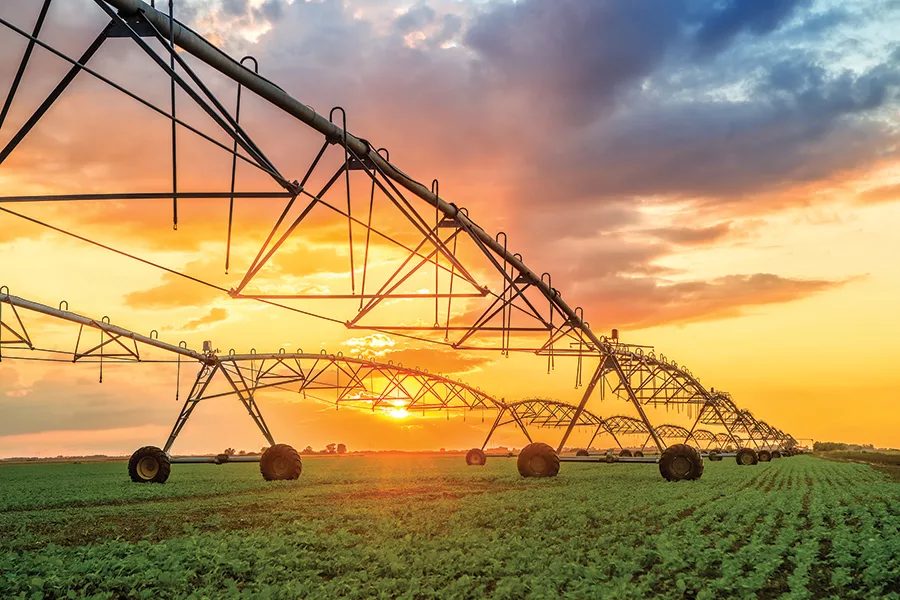
Home » Late winter bolstered water supplies, took some of the sting out of drought
Late winter bolstered water supplies, took some of the sting out of drought

June 13, 2022
Thanks to a very wet April, the Pacific Northwest has a lot of water.
That’s potentially great news for water users.
After declaring a drought in the Mid-Columbia on July 14, 2021, the Washington Department of Ecology downgraded Benton and Franklin counties to “drought advisory” status in late May.
Five watersheds spanning parts of Spokane, Lincoln, Grant, Adams, Whitman, Stevens, Okanogan and Pend Oreille counties remain in “drought emergency” status.
“2021 saw extreme temperatures and near record-low precipitation across much of the state,” said Ecology drought coordinator Jeff Marti. “In 2022, conditions have been much more normal, but we’re still trying to make up a deficit in some places. Extending the drought declaration for these areas will give us more tools to manage water supplies and respond to changing conditions.”
The cool, wet weather is good for irrigators. Ecology does not anticipate issues for them this summer. Some junior water right holders in lower elevation basins could get curtailed, but not in the Tri-Cities, it said.
Likewise, the U.S. Bureau of Reclamation expects a full water supply through September in the Yakima Basin.
‘Awesome April’
The Natural Resources Conservation Service used the term “Awesome April” to describe the welcome combination of snow, precipitation and cooler weather in its May 1 water supply outlook.
“So much for the doom and gloom as reported last month,” the authors said. “This Awesome April brought most of the winter’s missing snow in just one month.”
Snowpack was measured in feet instead of the usual inches and led to one of the best April comebacks for water in recent memory, even better than April 2011.
“Going back to 2009, there have only been two significant years where April saved the day,” the conservation service said.
Typically, April snow is light and evaporates when the weather warms, meaning it has little impact.
But this year’s rain and snow was accompanied by cool temperatures, which slowed stream runoff.
The average April temperature in Pasco was 48.9 degrees, according to the Office of the Washington State Climatologist. April precipitation totaled 1.93 inches, the highest since records began in 1998.
The Department of Ecology said it was the third coolest April on record for the state, and the coolest ever recorded in Walla Walla, Ritzville, Wenatchee and Ephrata.
And it was the 10th wettest April ever recorded too.
The snow-plus-cold led to surprising gains in snow water equivalent at higher elevations throughout the state.
Snowpack measurement in almost every region has been above 100% of the median; precipitation in the central Columbia region to May 1 of this year was 205% of the average and the Lower Yakima region was at 219%. Reservoir levels are up.
Washington is the only western state with normal or better reservoir storage levels, according to the National Weather Service.
Other problems
The cold and rain slowed early seasonal field work across Idaho and parts of Eastern Washington.
Planting and emergent growth both lagged from previous years, especially with grain and vegetable growers.
“However, winter wheat yields look promising across the Inland Northwest,” the National Weather Service said.
“Some drought-stricken areas of central Washington did see small improvements in winter wheat and range conditions due to the spring precipitation. Yet it was not widespread enough and lacked in north central Washington.”
Breezy conditions brought blowing dust to parts of Grant County, and livestock producers in central Washington remain concerned on the outlook of hay and rangeland for their herds.
Too, the Kennewick Irrigation District started the irrigation season with an above-average amount of winter damage to its system, courtesy third-party contractors installing high speed internet infrastructure. In May, the irrigation district declared an emergency, which allowed it to bring in outside help to speed up repairs.
On June 1, 500 of its 25,000 customers were without water.
On a more positive note, KID now fully controls its formerly federal water facilities after the Bureau of Reclamation transferred ownership in January.
The transfer covers the federally-owned works facilities within the water conveyance and distribution system – which includes about 100 miles of canals and appurtenant works (which are the works near dams), as well as a 46-acre parcel and 971 acres of easements.
KID has been responsible for operation and maintenance of the system since July 22, 1953, and has repaid most of the project’s construction costs.
Owning it outright will give KID flexibility to determine the best use of the infrastructure, including the potential to create linear parks and walking paths, said Gene Huffman, KID board president.
Long-term effects
Drought conditions have lessened, but have not disappeared, the Department of Ecology cautioned.
Long-term precipitation deficits from the past one to two years persist. Below normal soil moisture at the root zone is a significant issue for dryland farmers and is the result of lower-than-average rainfall in the last one to two years.
The forecast gives cause for optimism.
The state climatologist’s office said the outlook showed a 40%-50% chance of below normal temperatures and above-average rainfall in May, when the Tri-City average is typically 74 degrees.
Beyond that, Mid-Columbia should settle into its usual summer routine: hot and dry.
In conclusion, the cold, wet April delivered a much-needed boost to the region’s water supply and helped Eastern Washington shake off the worst effects of drought.
The bad news is it wasn’t enough to get completely out of it.
Agriculture + Viticulture
KEYWORDS june 2022





